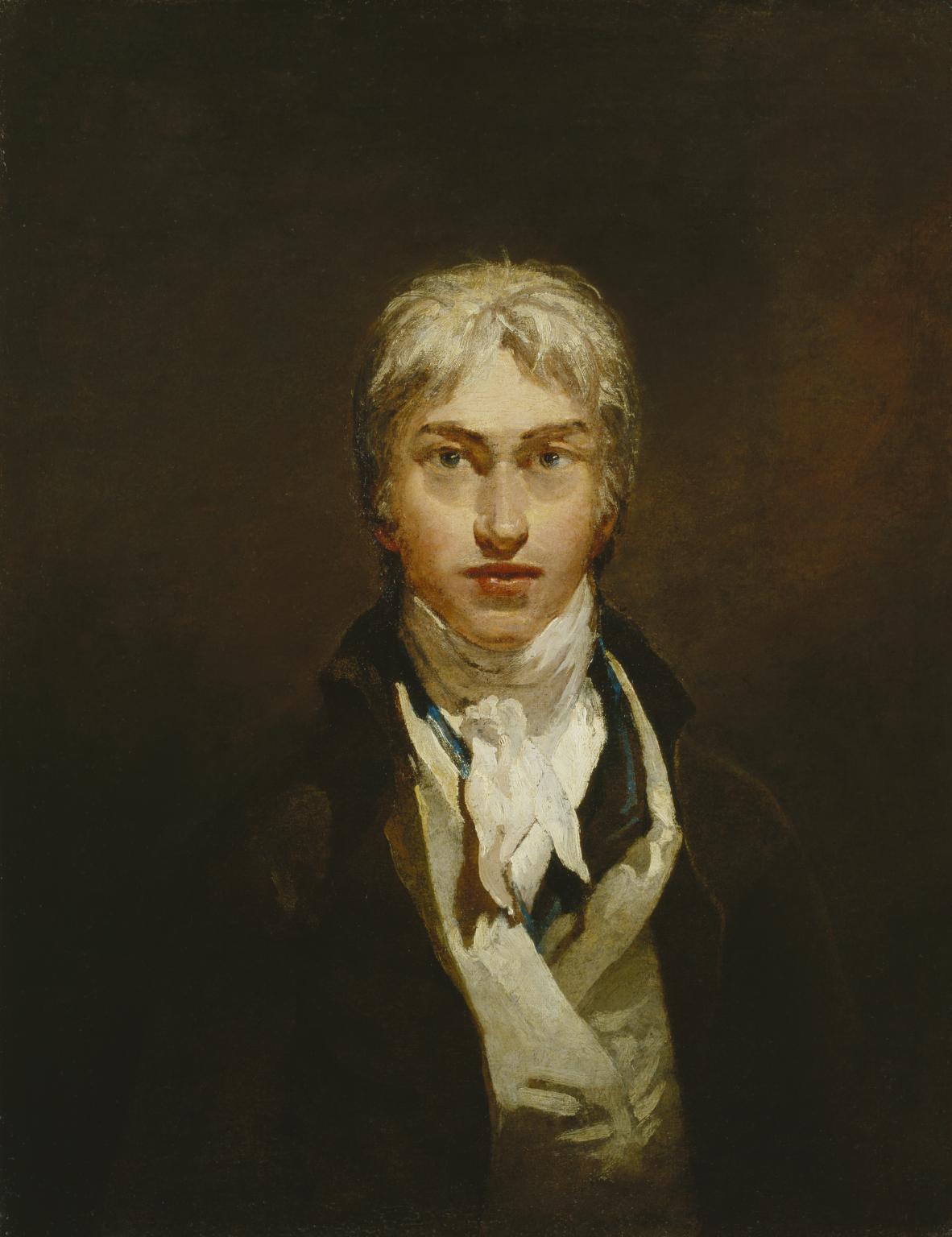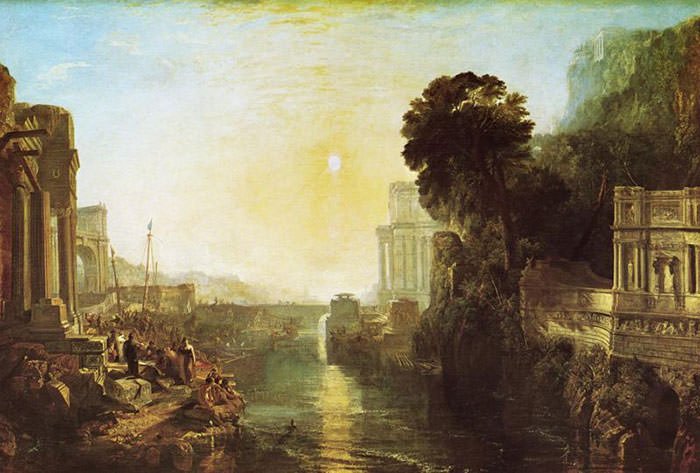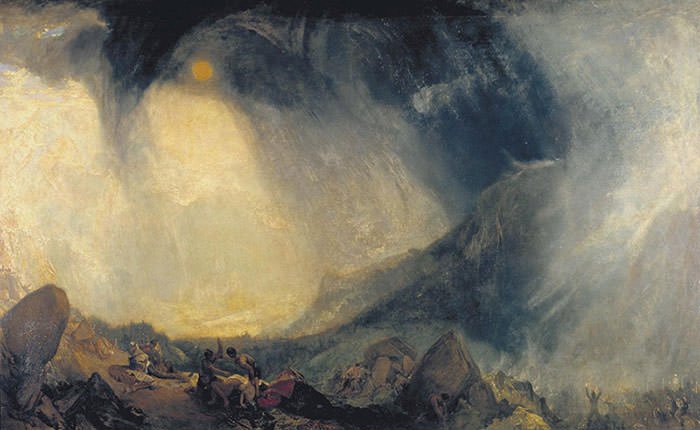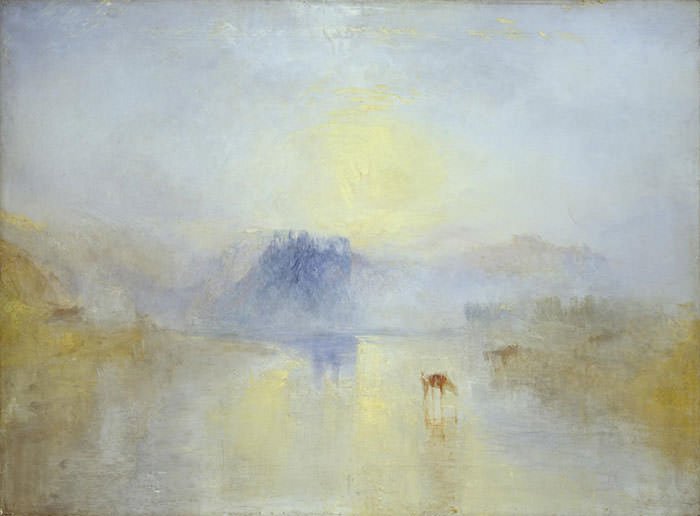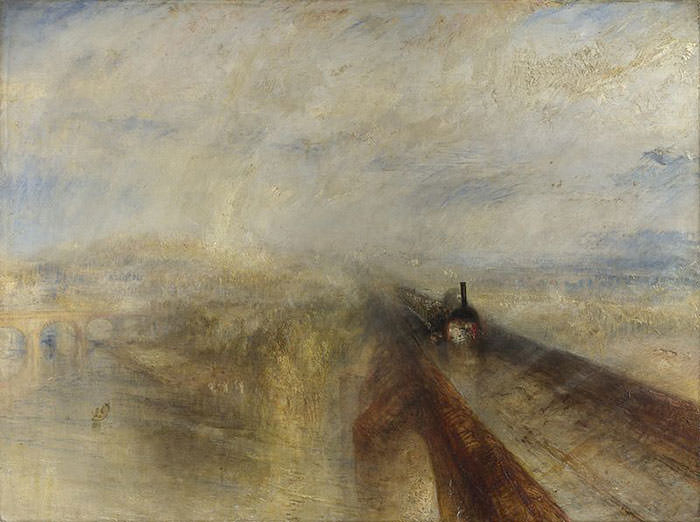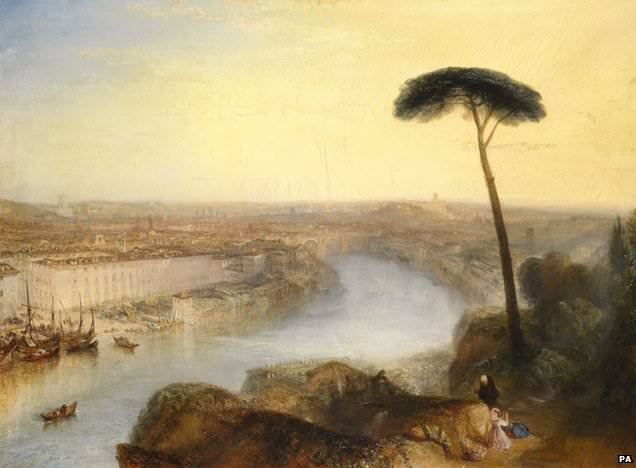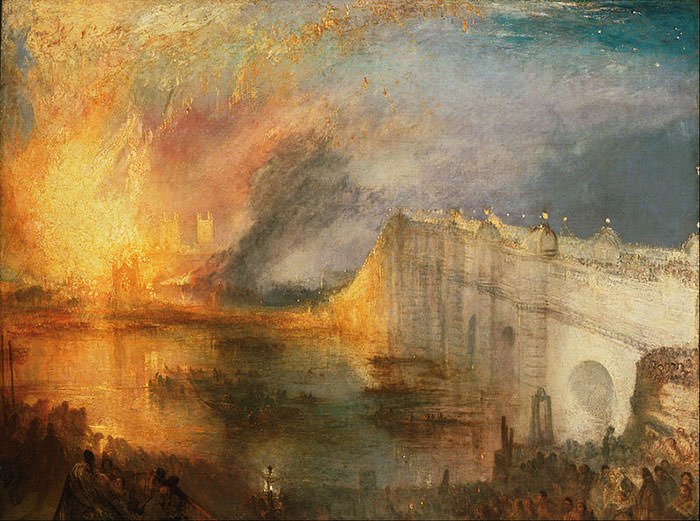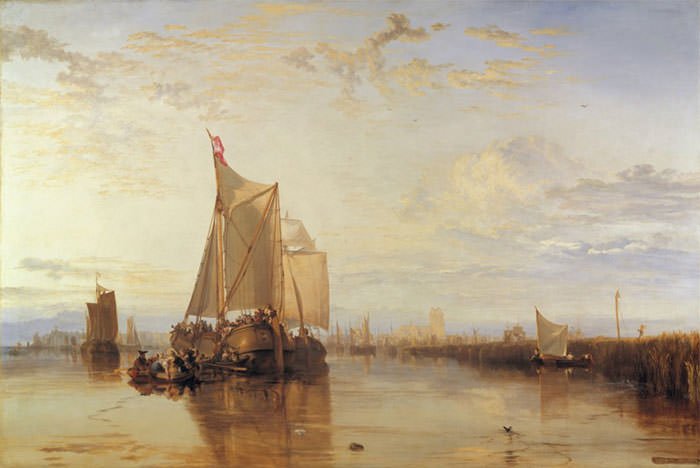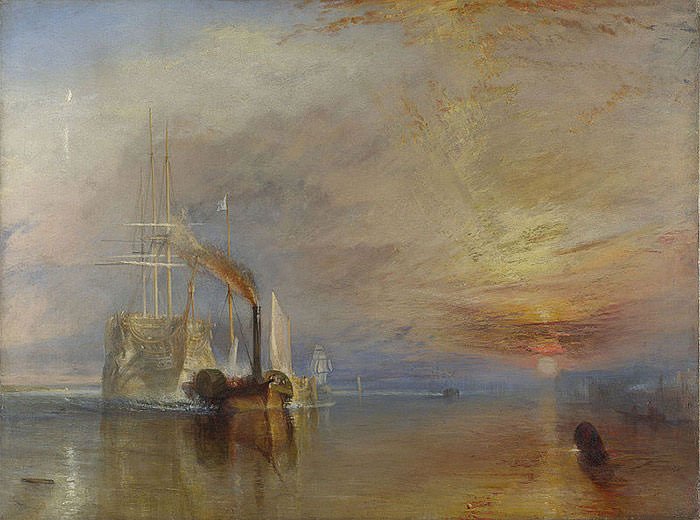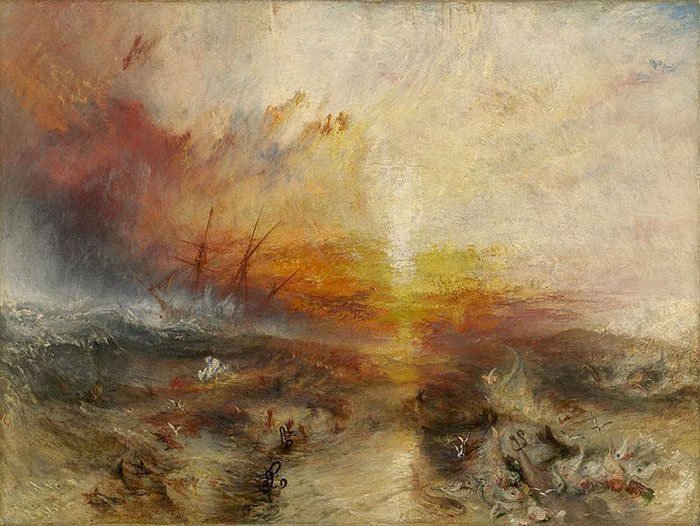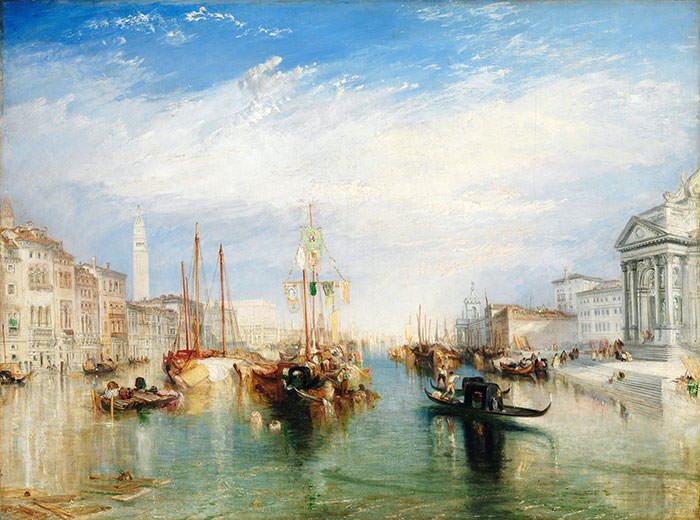- Overview
-
Joseph Mallord William Turner (23 April 1775 – 19 December 1851), known as J. M. W. Turner and contemporarily as William Turner, was an English Romantic painter, printmaker and watercolourist, known for his expressive colourisation, imaginative landscapes and turbulent, often violent marine paintings. Turner was born in Maiden Lane, Covent Garden, London, to a modest lower middle-class family. He lived in London all his life, retaining his Cockney accent and assiduously avoiding the trappings of success and fame. A child prodigy, Turner studied at the Royal Academy of Arts from 1789, enrolling when he was 14, and exhibited his first work there at 21. During this period, he also served as an architectural draftsman. He earned a steady income from commissions and sales, which due to his troubled, contrary nature, were often begrudgingly accepted. He opened his own gallery in 1804 and became professor of perspective at the Academy in 1807, where he lectured until 1828, although he was viewed as profoundly inarticulate. He traveled to Europe from 1802, typically returning with voluminous sketchbooks.
- Career
-
- From 1796 onwards, Turner exhibited oil paintings as well as watercolours at the Royal Academy and continued to travel in search of inspiration. He exhibited his works each year at the academy while painting in the winter and travelling in the summer widely throughout Britain to seek inspiration.
- In 1802, he travelled widely through Europe, including France and Switzerland, and also studied at the Louvre in Paris. He made more than 400 drawings during this tour and later continued to paint pictures of scenes which had fascinated him on the trip.
- Soon, he was able to earn a steady income through a variety of artistic works such as selling designs to engravers, coloring sketches and taking up private lessons. In 1804, he opened a private gallery where he displayed his paintings for several seasons.
- In 1807, Turner accepted a position as professor of perspective at the Royal Academy, where he lectured until 1828.
- Over time, his paintings such as the ‘St. Mawes at the Pilchard Season’ (1812) and ‘Frosty Morning’ (1813) became increasingly luminous and atmospheric in quality. His masterpiece of this period is the ‘Dort or Dortrecht: The Dort Packet Boat from Rotterdam Becalmed’ (1818), a tribute to Aelbert Cuyp.
- In 1819, Joseph Turner set out on his first visit to Italy and during his journey, he made about 1,500 drawings. Over the next few years, he painted a series of pictures inspired by his travel experiences, prominently that of Venice.
- In the last 15 years of his life, he continued to travel and get inspiration, visiting Italy, Switzerland, Germany, and France. Some of his magnificent late works include ‘The ‘Fighting Téméraire’ Tugged to Her Last Berth to Be Broken Up, 1838’ (1839), and ‘Rain, Steam, and Speed’ (1844). In 1850, Turner exhibited his works for the last time.
- From 1796 onwards, Turner exhibited oil paintings as well as watercolours at the Royal Academy and continued to travel in search of inspiration. He exhibited his works each year at the academy while painting in the winter and travelling in the summer widely throughout Britain to seek inspiration.
- Legacy
-
Turner left a small fortune which he hoped would be used to support what he called "decayed artists". He planned an almshouse at Twickenham with a gallery for some of his works. Another portion went to the Royal Academy of Arts, which occasionally awards students the Turner Medal.
In 1910, the main part of the Turner Bequest, which includes unfinished paintings and drawings, was rehoused in the Duveen Turner Wing at the National Gallery of British Art (now Tate Britain). In 1987, a new wing at the Tate, the Clore Gallery, was opened to house the Turner bequest, though some of the most important paintings remain in the National Gallery in contravention of Turner's condition that they be kept and shown together.
St Paul's Cathedral, Royal Academy of Arts and Victoria Albert Museum all hold statues representing him. A portrait by Cornelius Varley with his patent graphic telescope (Sheffield Museums Galleries) was compared with his death mask (National Portrait Gallery, London) by Kelly Freeman at Dundee University 2009–10 to ascertain whether it really depicts Turner.
The Tate created the prestigious annual Turner Prize art award in 1984, named in Turner's honour, and 20 years later the Royal Institute of Painters in Water Colours founded the Winsor Newton Turner Watercolour Award. A major exhibition, "Turner's Britain", with material (including The Fighting Temeraire) on loan from around the globe, was held at Birmingham Museum and Art Gallery from 7 November 2003 to 8 February 2004. In 2005, Turner's The Fighting Temeraire was voted Britain's "greatest painting" in a public poll organised by the BBC.
- On View
-
- Yale Center for British Art. New Haven
- Tate Gallery, Britian
- National Gallery of Art East Building, Washington D.C
- Scottish National Gallery. Edinburgh
- J. Paul Getty Museum, Los Angeles
- Art Gallery of South Australia, Adelaide
- Museum of Fine Arts, Houston
- National Gallery of Victoria, Southbank
- National Gallery, London
- Lod Angeles Couty Museum of Art, Los Angeles
- Isabella Stewart Gardner Museum, Boston
- Frick Collectionn New York City
- Philadelphia Museum of Art, Philadelphia
- Art Institute of Chicago, Chicago
- Allen Memorial Art Museum, Oberlin(Ohio)
- Nelson-Atkins Museum of Art, Kansas City
- Kimbell Art Museum, Texas
- Calouste Gulbenkian Museum, Portugal
- Cleveland Museum of Art, Cleveland
- Museum of Fine Arts, Boston

